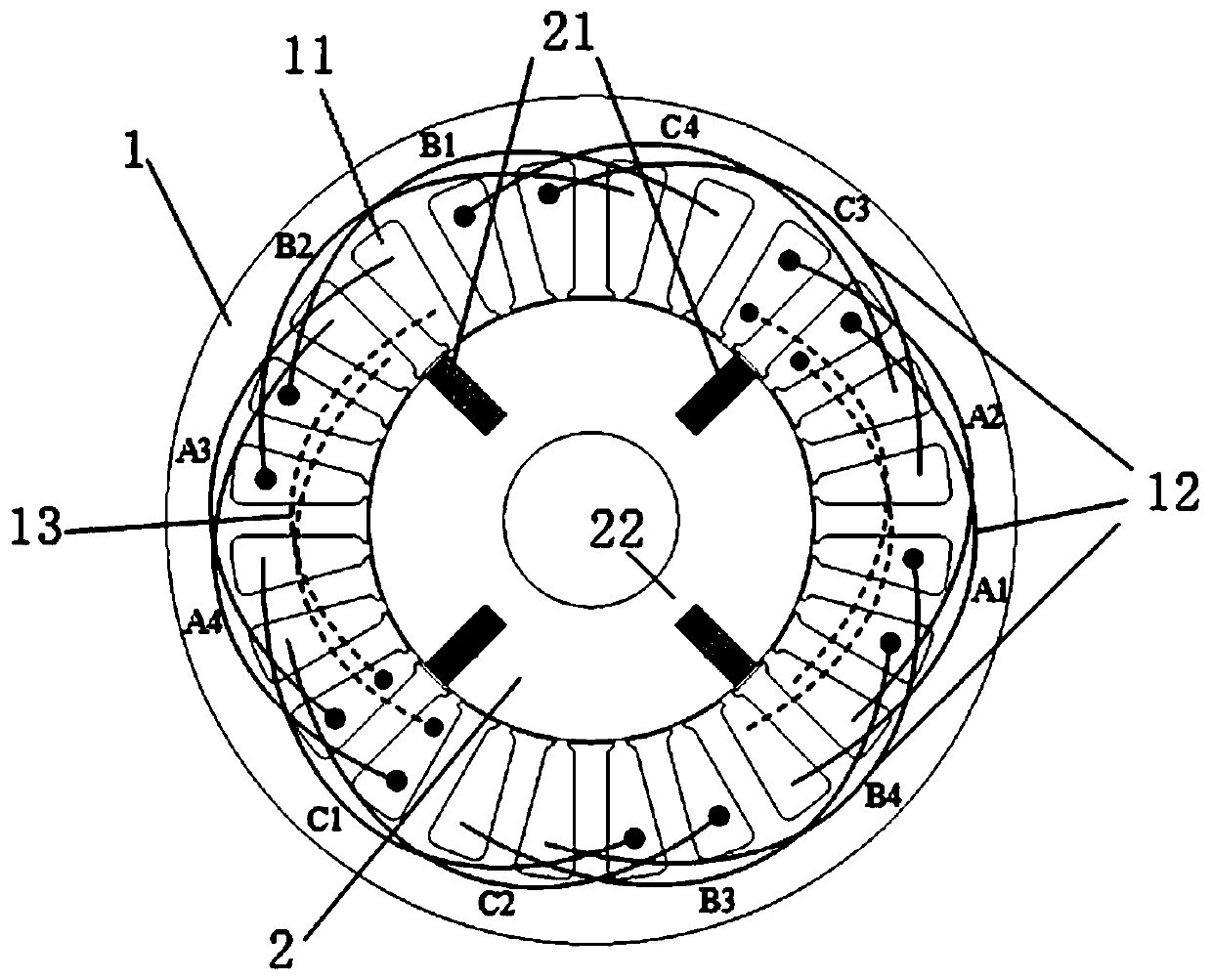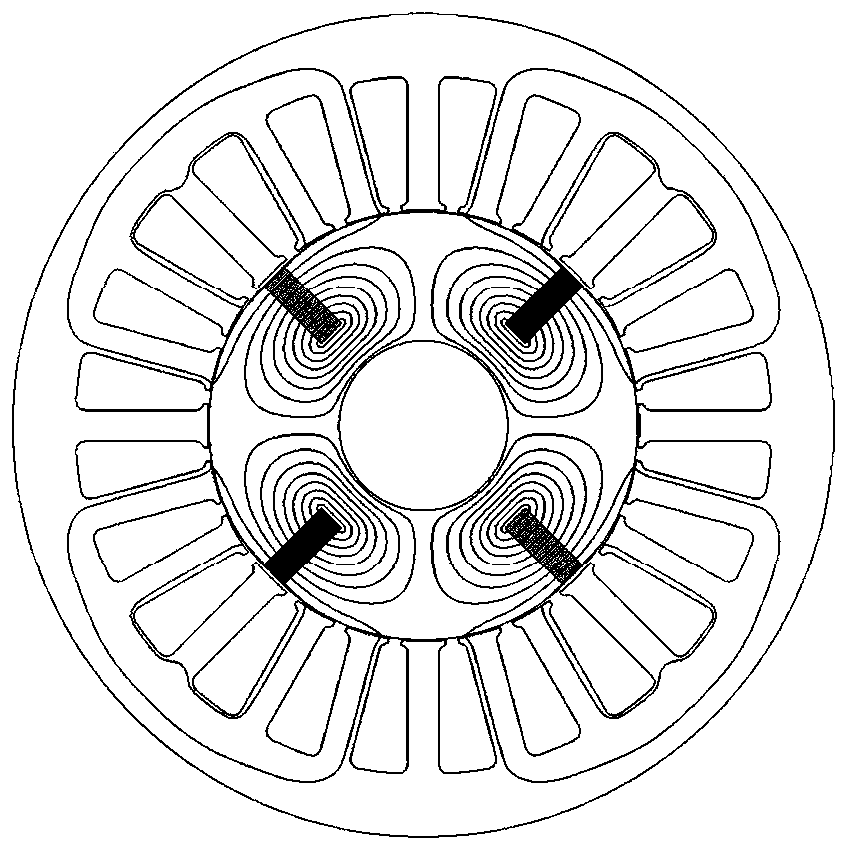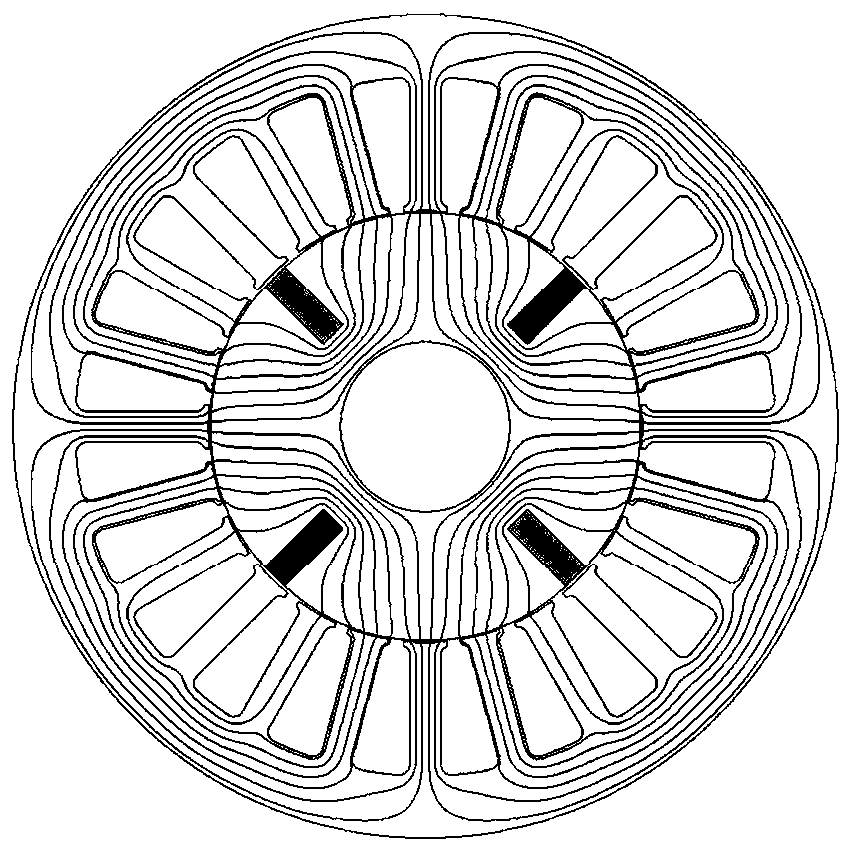Bilateral excitation type tangential magnet hybrid excitation brushless motor
A hybrid excitation and brushless motor technology, applied to synchronous motors with stationary armature and rotating magnets, magnetic circuit rotating parts, magnetic circuit shape/style/structure, etc., can solve the limitation of magnetic modulation efficiency and power density , low space utilization, low power density, and low utilization of motor materials, etc., to achieve high excitation efficiency, simple structure, and favorable effects for magnetic field adjustment
- Summary
- Abstract
- Description
- Claims
- Application Information
AI Technical Summary
Problems solved by technology
Method used
Image
Examples
Embodiment 1
[0049] Take the three-phase inner rotor motor m=3, N s =24, p =3 as an example, where m represents the number of motor phases, N s Represents the number of stator slots, and p represents the number of rotor pole pairs.
[0050] Such as figure 1 As shown, a bilateral excitation type tangential magnetic steel hybrid excitation brushless motor includes a stator 1, a rotor, a tangential magnetic steel 21, a magnetic bridge 22, an armature winding 12, and an excitation winding 13; gap.
[0051] In this embodiment, both the stator and the rotor core are preferably made of magnetically conductive materials.
[0052] The armature winding and the field winding are both AC windings, which are respectively wound on both sides of the stator slot in the stator. The relative winding positions of the armature winding and the field winding can be changed, that is, the field winding is outside the slot when the armature winding is inside the slot, or the field winding is inside the slot when the arm...
Embodiment 2
[0064] In the first embodiment, a magnetic barrier is provided on the quadrature axis magnetic circuit of the rotor to increase the reluctance of the quadrature axis magnetic circuit, which can reduce the influence of the armature reaction on the AC excitation magnetic field and the permanent magnetic field, thereby improving the output capability of the motor.
[0065] The magnetic barrier may be a surface quadrature magnetic barrier 23 or a built-in quadrature magnetic barrier. Both the surface quadrature magnetic barrier and the built-in quadrature magnetic barrier are preferably air gaps or non-magnetic materials.
[0066] The magnetic barrier in this embodiment 2 is a surface quadrature-axis magnetic barrier, which is arranged on the outer surface of the rotor, preferably on the outer surface of the rotor corresponding to the position of the tangential magnetic steel, that is, to increase the air gap of the quadrature-axis magnetic circuit, such as Figure 4 Shown.
Embodiment 3
[0068] Magnetic barriers include both surface quadrature-axis magnetic barriers and built-in quadrature-axis magnetic barriers. That is, on the basis of Example 2, a built-in quadrature-axis magnetic barrier inside the core is added, such as Figure 5 As shown, it is arranged on the rotor core located between two adjacent tangential magnets. As an alternative, the magnetic barrier can also only be a built-in quadrature axis magnetic barrier.
PUM
 Login to View More
Login to View More Abstract
Description
Claims
Application Information
 Login to View More
Login to View More - R&D
- Intellectual Property
- Life Sciences
- Materials
- Tech Scout
- Unparalleled Data Quality
- Higher Quality Content
- 60% Fewer Hallucinations
Browse by: Latest US Patents, China's latest patents, Technical Efficacy Thesaurus, Application Domain, Technology Topic, Popular Technical Reports.
© 2025 PatSnap. All rights reserved.Legal|Privacy policy|Modern Slavery Act Transparency Statement|Sitemap|About US| Contact US: help@patsnap.com



